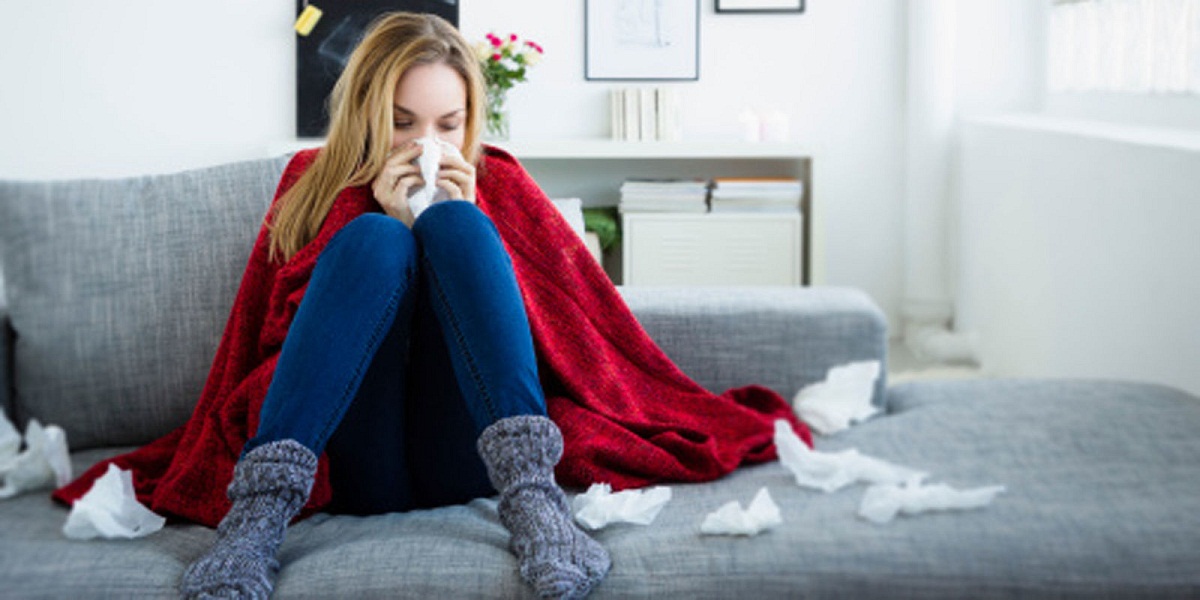Influenza is part of a larger category of respiratory viral diseases. Thus, there are a number of viruses circulating in the same period last year, flu-like symptoms but give differ from it by evolution easier.
You can recognize a respiratory virus due to other types of viruses than influenza viruses slower after the onset of disease (easy start with sore throat, stuffy nose, headache) and by the evolution of the disease easier.

Influenza is easily spread from person to person due to favorable conditions such as urban environments, collectives of children and adolescents.
The definition flu
It is an acute illness. Infectious, highly contagious, caused by the influenza virus. It manifectă respiratory symptoms and toxicities in general, can sometimes evolve into serious forms. Favors winter illnesses and influenza epidemics (winter, early spring), but the disease can occur in other seasons.
The transmission
It is transmitted by air, from the healthy person sick man:
• Direct through coughing or sneezing;
• Indirectly through freshly contaminated objects (handkerchief, towel, dishes, etc.)
Contagiousness is high, but short (2-4 days after onset of illness).
Manifestation
Illness starts suddenly, at 1-2 days after contact with the sick man.
Symptoms
• Fever 39-40 degrees Celsius;
• Chills;
• Headache (headache);
• Muscle;
• asthenia (weakness);
• Congestion throat (red throat);
• Ragusa to aphonia (loss of voice);
• Frequent cough, dry, tiresome;
• anorexia (loss of appetite);
• Nausea. Vomiting;
Treatment
Common forms are treated at home with bed rest, anti-pyretic (paracetamol). Do not take acetylsalicylic acid (aspirin), it may promote Reye’s syndrome.
• See your family doctor!
• Flu Severe and complicated treated in the hospital: supportive care (respiratory and cardio – vascular), antibiotics if bacterial superinfection
Prevention
a) General recommendations for preventing influenza illness by:
1. Avoid agglomerations
2. Avoid, if possible, contact with sick people;
3. Hand washing all the time, especially after sneezing and coming into contact with sick people,
4. sick man is isolated from the rest of the family in a room appropriate hygienic (bright, airy sufficiently heated 24-26 degrees Celsius).
5. The patient will use sanitary napkins in case of coughing or sneezing
6. Airing rooms or offices with maintaining a temperature of 18-20 degrees C.
7. Keeping sick children at home to avoid spreading the disease in the community.
8. Avoid visiting the sick or suspected flu.
b) Influenza vaccination
The most effective way to prevent influenza illness influenza vaccination. This vaccination protects only the person vaccinated against influenza viruses circulating in the season, contained in the vaccine, and not against all types of viruses like influenza but give simpotomatologie development easier. Vaccination is recommended for all persons from the age of 1 year. It must be performed in good health, being the only contraindication to vaccination allergy to egg protein.
The period in which the vaccine is good to be in the preseason, ie October-December of each year. The vaccine used is different from one season to another, and its composition is determined by the World Health Organization vaccine formulation which transmits all manufacturers.
Groups of the population “target” for special vaccination programs are:
a) people at high risk of complications, which include the elderly or disabled, the institutionalized adults and children with chronic conditions (cardiovascular, pulmonary, metabolic, renal and immune suppression), people over 65, children and adolescents (6 months to 18 years) who are receiving long-term aspirin medication and who are thus at risk of developing Reye syndrome after an influenza infection.
b) persons who by reason of occupation, can transmit influenza to those in the category of high risk, namely doctors, health professionals environments, support personnel in hospitals and health care outpatient (mainly those in maternity, ICU, emergency stations ), employees of child welfare institutions and the elderly and those of units chronically ill family members (including children) including persons related with increased risk of influenza complications.
The World Health Organization has also recommended vaccination of all persons infected with HIV, people who travel to the tropics or southern hemisphere.











